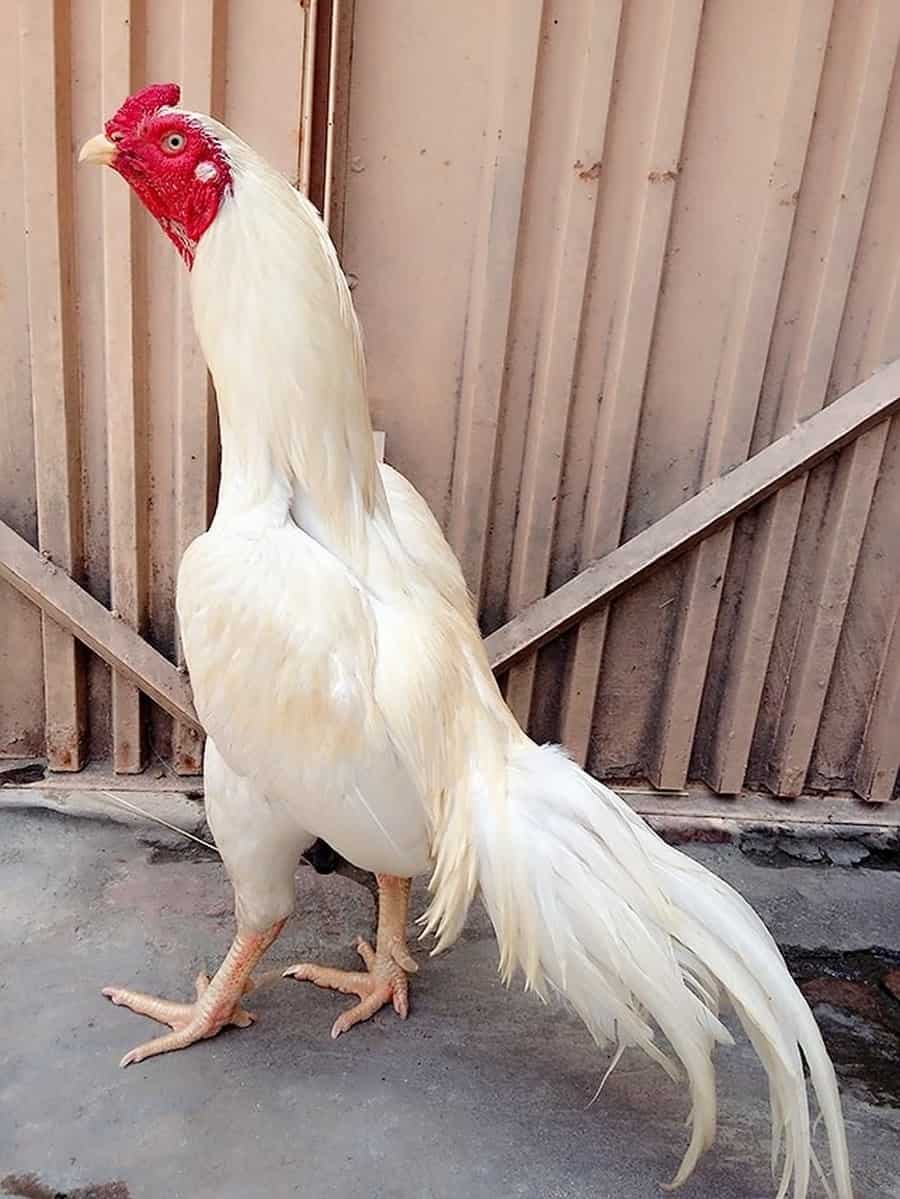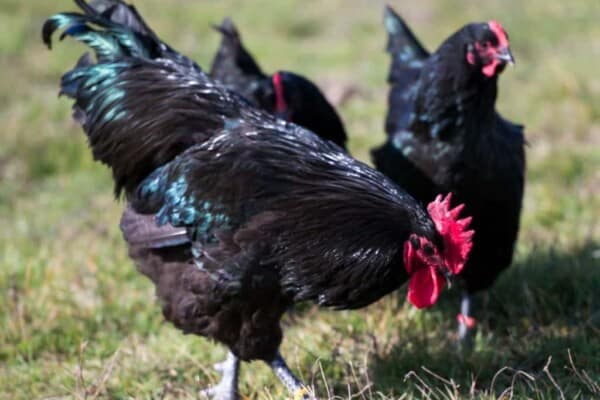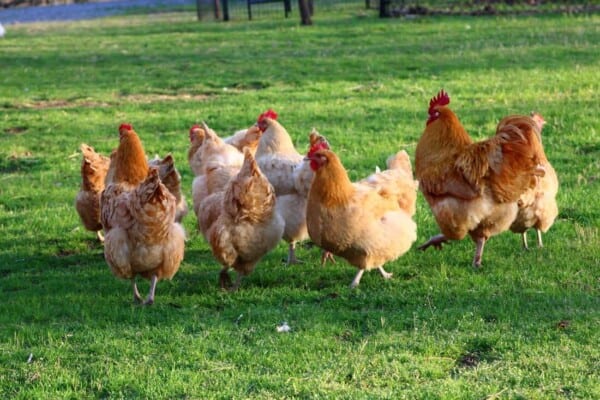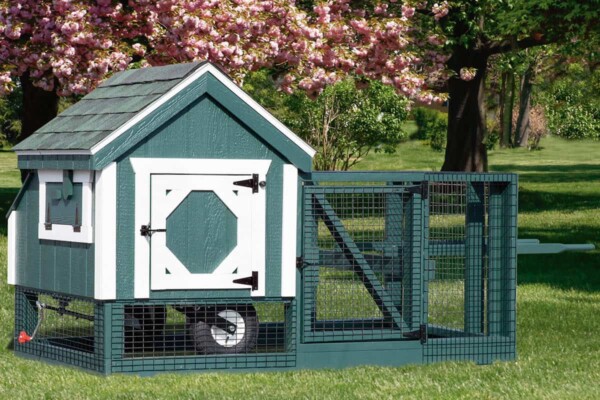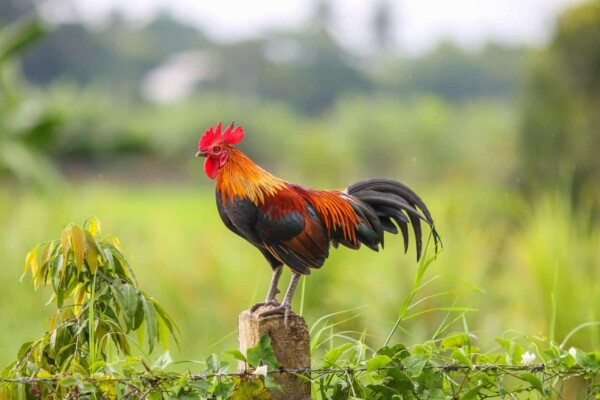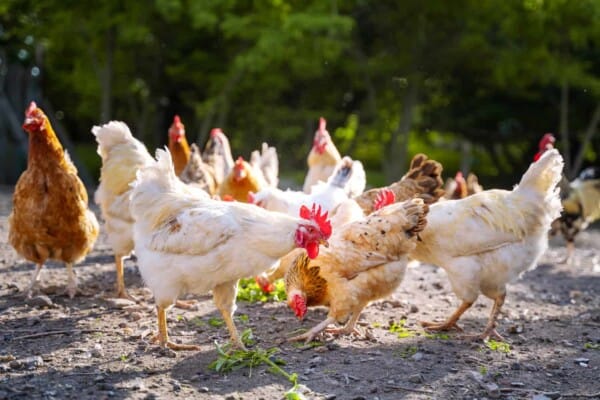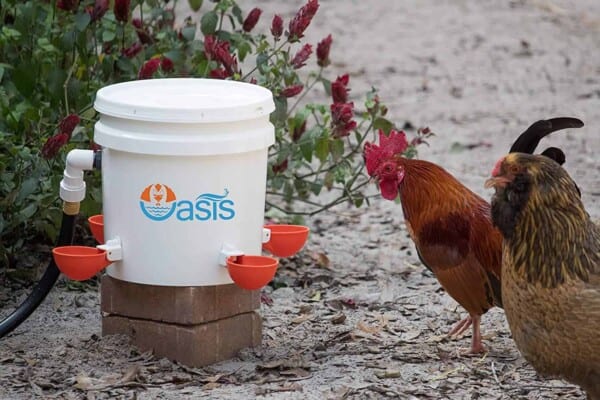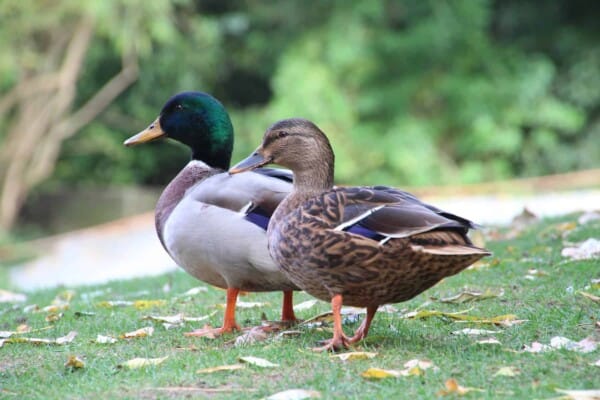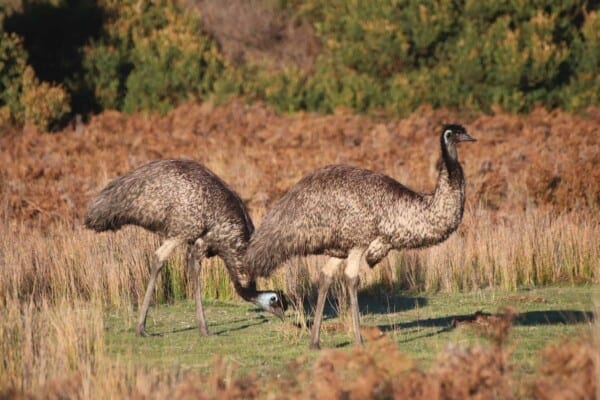When choosing the best chicken breed for your flock, you should always opt for the ones that offer you the most bang for their buck.
One quick way to differentiate between different breeds is to refer to them by their different colors. As far as which colors are available for you, you have black, blue, red, lavender, brown, silver and of course white, to name a few.
While each and every breed has its own advantages and perks, most farmers prefer to opt for white chicken breeds simply because of how simple and easy they are to take care of.
So, if you want to start your own flock then get ready because we’re about to give you an in-depth guide on the top 15 best white chicken breeds are out there, starting off with:
15. Araucana Chicken

Starting off our list we have one of the most unique breeds out there, the Araucana chicken. As you can probably tell from the pictures alone, these chickens are known for their spectacular ear tufts.
Another thing that you should know about the Araucana is the fact that this breed comes in all sorts of different color varieties. Still, by far the most popular and our personal favorite will always be the white Araucana.
These chickens can lay around three to five blue eggs every week, which means that you can easily expect at least 150 eggs per year from them.
Another key characteristic of the Araucana chicken is the fact that they don’t have tails to begin with. While this does make them stand out quite a lot from the average chicken, it doesn’t impair them in any way.
As far as their personality and temperament is concerned, while some strains of Araucana can be quite frightful and nervous, most of them are very calm and easygoing, which makes them perfect for families with children.
14. White Orpington Chicken
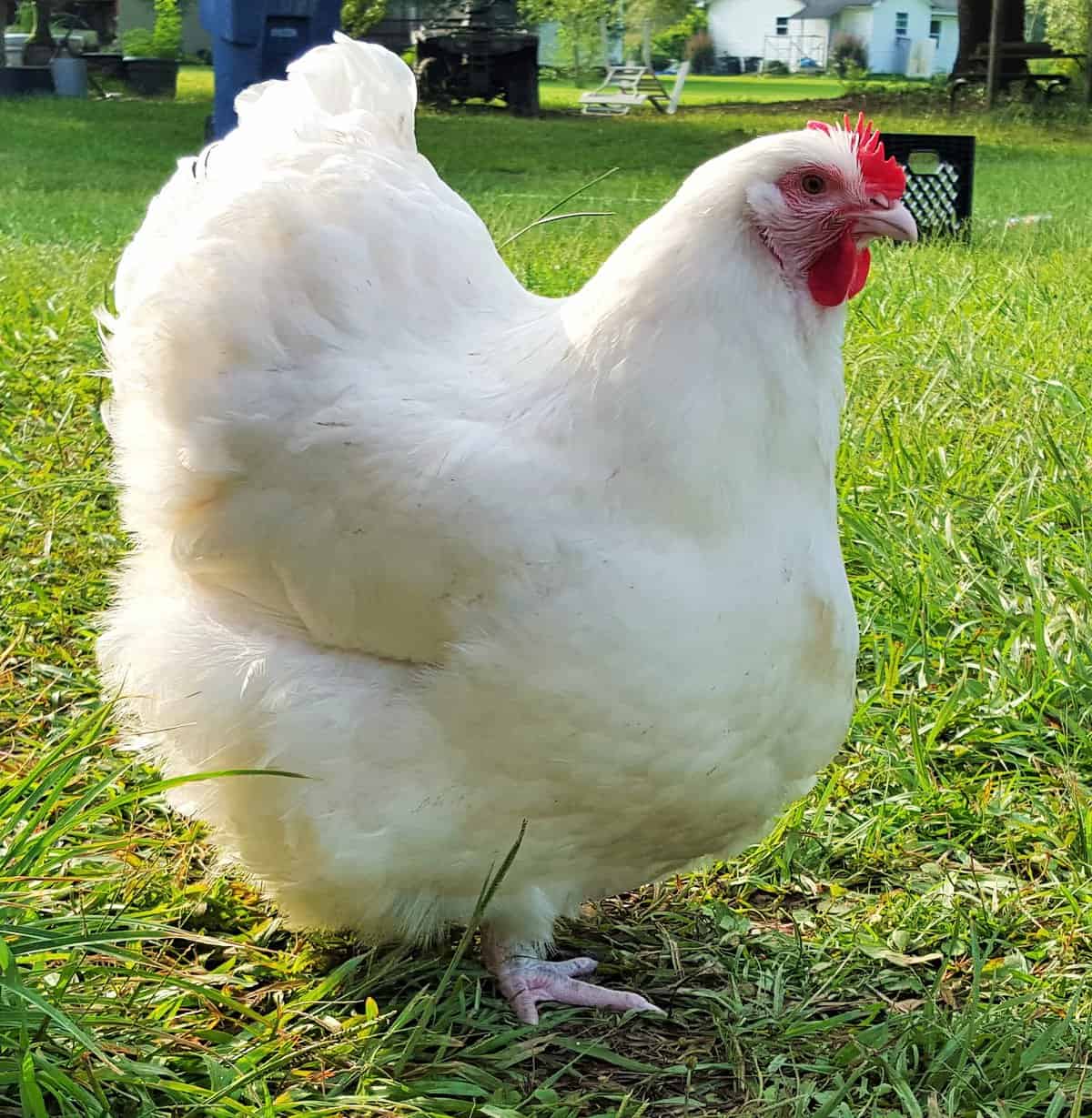
Next up on our list we have the beautiful white chicken breed known as the White Orpington. While these birds are anything but small, they are also very gentle and easy to take care of.
On top of that, White Orpingtons also make for amazing table birds. They also brood quite often, so if you’re planning on starting off small but slowly increasing your flock size, you can’t go wrong with a few Orpingtons.
Do keep in mind though that the White Orpington chicken does not enjoy foraging all that much. Because of this you will need to make sure that they get pampered and taken care of on a daily basis.
Still, while that is a bit of a disadvantage to many people, you should also take into account the fact that they can easily lay as many as 4 to 5 light brown eggs per week.
So, with all of that being said, if you like the idea of having a few large broody chickens with pure white plumage around your farmhouse, definitely go for a pair of White Orpingtons.
13. White Plymouth Rock Chicken
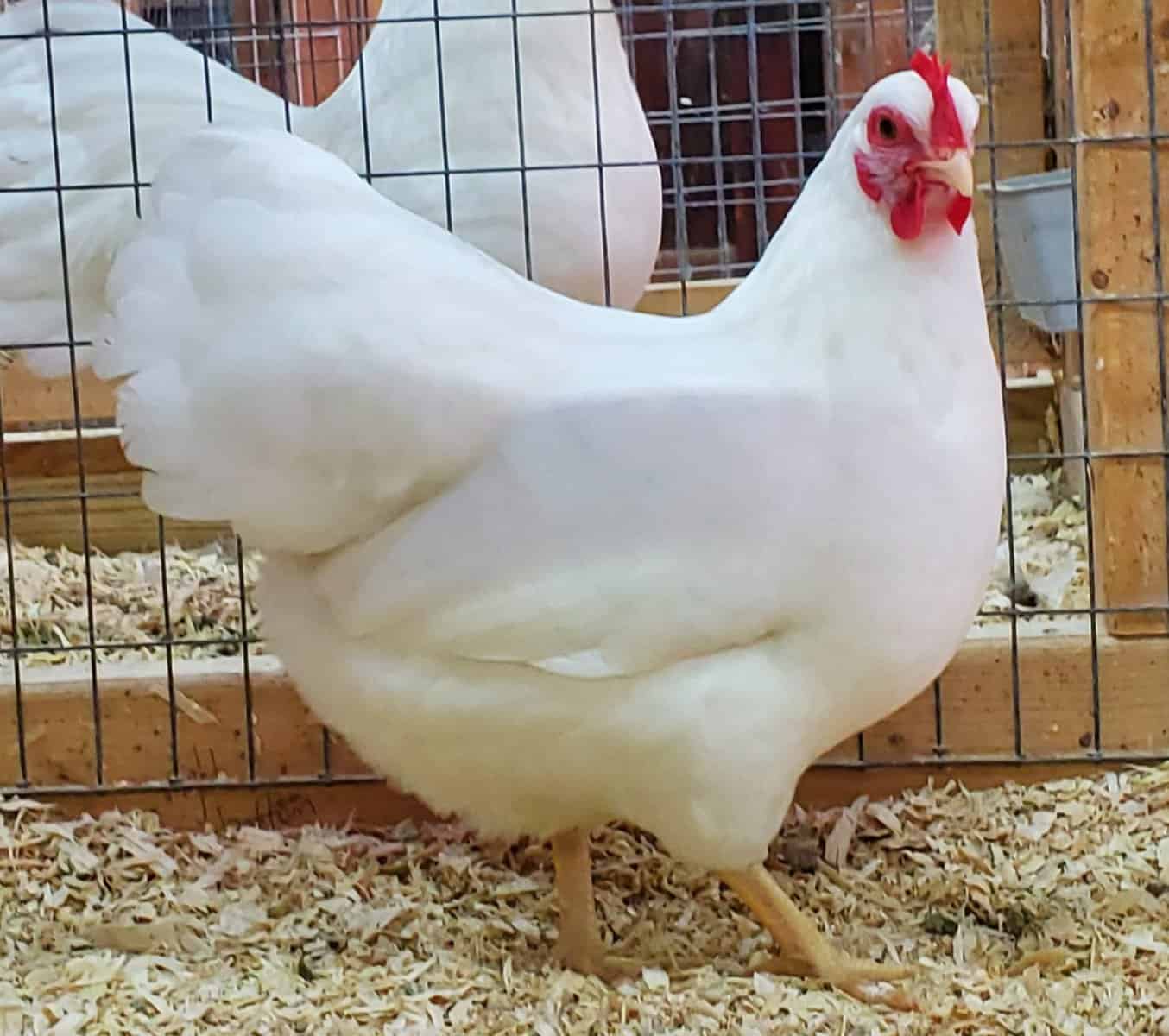
The White Plymouth Rock chicken is originally from Massachusetts, but because of its widescale appeal, it has spread its wings around the world, becoming a staple for many farms thanks to its egg producing capabilities.
Another thing that you should know about the White Plymouth Rock chicken is that they’re typically very fluffy little beings. This works out in their favor as they can easily survive really cold temperatures that most other breeds couldn’t.
They’re technically considered to be standard-sized birds, but we could easily make a case for White Plymouth Rock chicken being on the larger side of the spectrum.
That’s because they tend to weigh in as much as 8lbs or 3.63 kg at their heaviest, which makes them perfect if you want to spice up your dinner table with some fresh meat.
At the end of the day though, while it is a good meat chicken, that’s not its main usage as the White Plymouth chicken is an incredibly proficient egg laying breed.
They can easily lay an egg per day, so long as they’re healthy of course. So, you can expect 350+ large brown eggs per year from them, which is quite an amazing deal if you ask us.
You can also invest into a bantam variation if you prefer to do so. Even though they are smaller, they can still produce a lot of eggs without suffering from broodiness.
12. Australian Langshan Chicken

As the name implies, the Australian Langshan chicken is by far the most popular breed in Australia. But did you know that this breed is actually native to China?
That’s right, but despite that little known fact, the Australian Langshan chicken has become a staple of the Australian chicken market.
This breed is known for being relatively tall, with feathered legs, a long tail and tail feathers that lay really low as they pace around.
While most Australian Langshan chickens are black, you can still find yourself a white colored one if you simply ask around for the White Croad Langshan chicken.
The standard Australian Langshan chicken can lay around 200 to 220 eggs per year, which makes them quite a good investment to say the least.
11. Bresse Gauloise Chicken

The main reason as to why anyone buys themselves some Bresse Gauloise chickens is because they are known for having some of the best tasting chicken meat on the market.
Still, what many people don’t realize is the fact that this is a medium-sized dual-purpose breed that can also lay as many as 260+ eggs per year, which is nothing to shun at.
Do keep in mind though that this breed’s skin is quite thin, and they have a lot of fat on their bones. This makes their meat more delicious but at the same time it makes them quite fragile, so they can easily get bruised if they’re not careful.
Most of their eggs are pretty large, weighing in at around 60g each, but again, most people won’t care that much about that since they’ll be using the Bresse Gauloise chickens for their meat anyways.
10. Leghorn Chicken

This is an Italian chicken breed that is known for having arrived to America around the 1820s. Ever since then, this breed has become a fan-favorite option for a lot of farms thanks to its incredible egg-laying ability.
While it is on the smaller end of the scale, weighing in at around 4 to 6 pounds or 1.81 to 2.72kg each, it can still be used for its meat when it reaches the end of its life cycle.
You can find Leghorn chickens in all sorts of different color variations, but by far the most popular one is always going to be the White Leghorn.
9. Hamburg Chicken
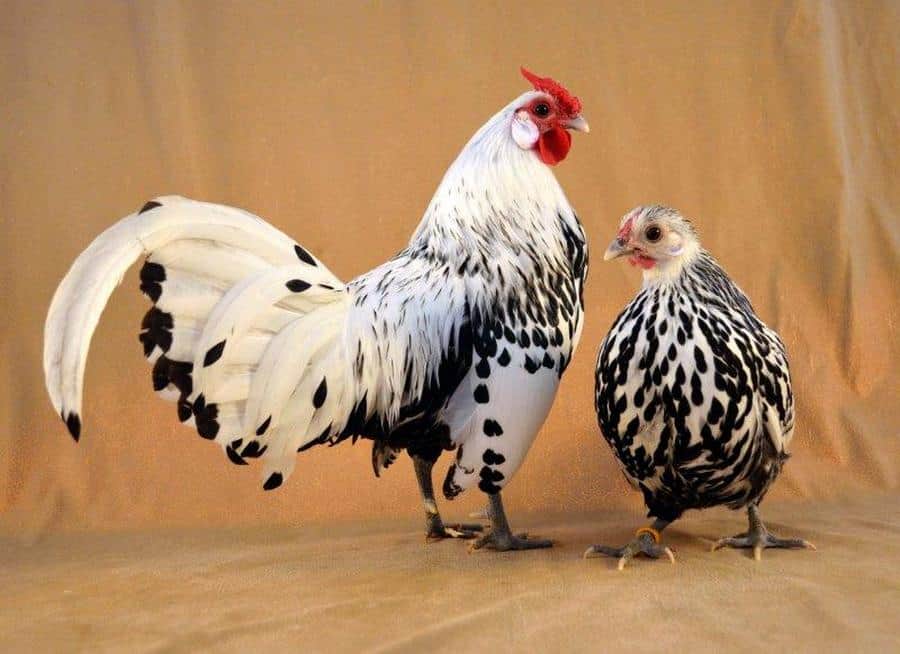
The Hamburg chicken originates from Holland, but just like most of the breeds on this list, it’s spread its wings so far and wide that it can be found all across the globe right now.
With that being said, what makes the Hamburg chicken so special in the first place? Well, for starters, even though it is a medium-sized bird with very slim legs, it is still considered to be a very nice addition to most meals.
That’s because Hamburg chicken meat is absolutely delicious. Most Hamburg chickens also get to be around 4 to 5 pounds or 1.8 to 2.2kg each at their heaviest.
As far as their egg production is concerned, you can expect to get around 150 to 200 eggs per year from this breed.
While there are plenty of other breeds that will lay more eggs than the Hamburg chicken, very few of them lay eggs as small as this breed.
So, if you like the idea of having a very cute white chicken around your farm that will lay very small and cute eggs every couple of days or so, definitely consider going for a Hamburg chicken.
8. Aseel Chicken
The Aseel chicken breed (also spelled Asil) is one of the oldest Indian breeds to have ever been discovered. Back in the day it was primarily used for cockfighting, although as the practice was banned in most places, it is now used more so for its ornamental qualities.
Just make sure to keep it away from other roosters if you get yourself one, because chances are that their instincts will kick in soon enough and they’ll start attacking everything in sight.
They are vicious fighters after all, and even though they are really cute from a distance, just keep in mind that they’re quite aggressive so you may want to keep a close eye on them as they mature.
Most Asil roosters can weigh in at around 4 to 4.5lbs or 1.81 to 2kg each, while the hens on the other hand usually weigh in at around 3.5 to 3.75lbs or 1.6 to 1.7kg each.
You also have access to a bantam version of the breed, although it is quite difficult to find so we wouldn’t recommend going for it specifically.
7. White Jersey Giant Chicken
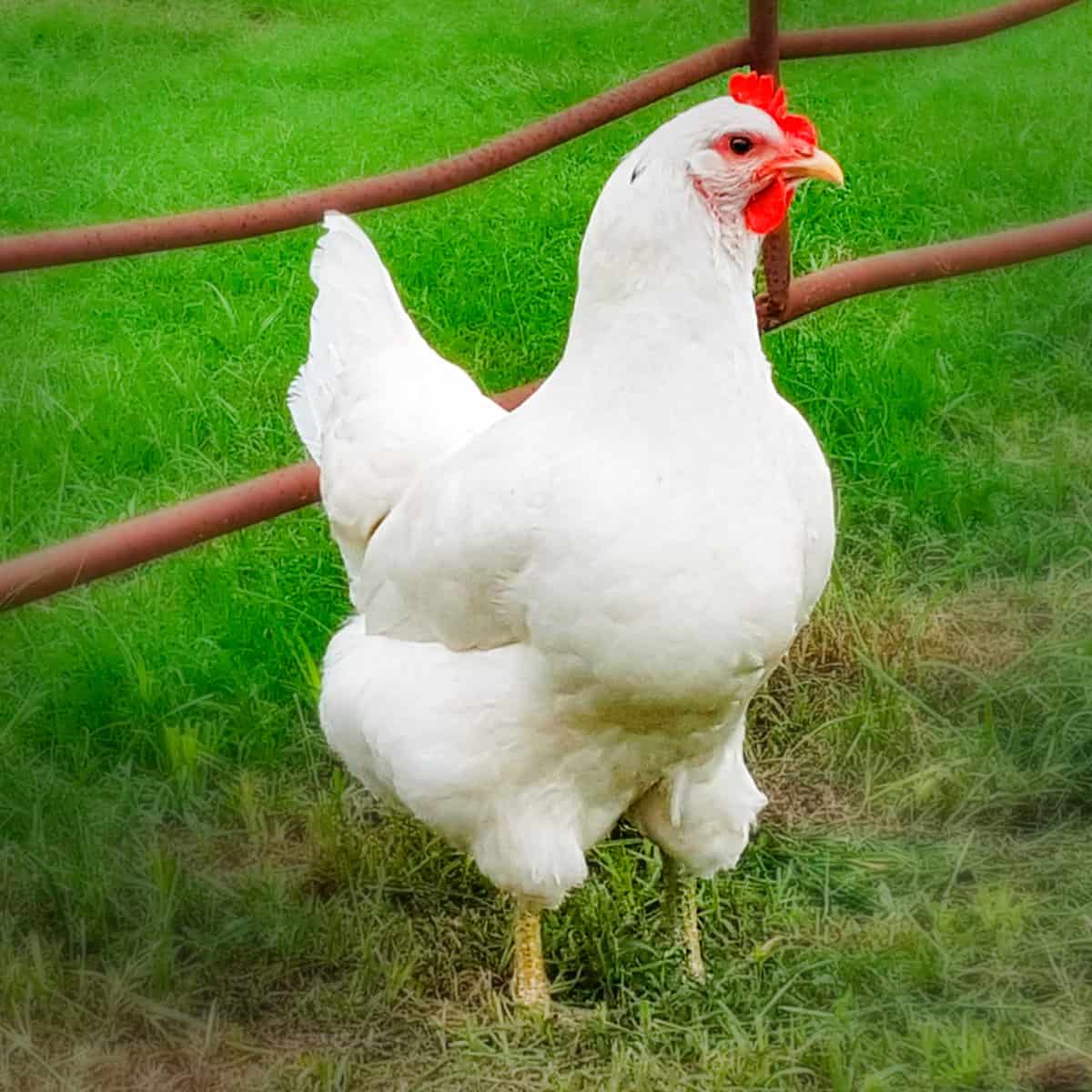
Coming up next, we have the White Jersey Giant chicken breed. This is by far one of the largest purebred chickens in the US and quite possibly in the whole wide world too.
As their name implies, these chickens are huge, with most roosters weighing in at around 13 to 15lbs or 5.9 to 6.8kg each. Most hens weigh in at around 11lbs or 5kg each, which is not too bad either.
Just keep in mind that if you do plan on going for the white variety of the Jersey Giant chicken, you can expect them to be around a pound lighter than the black ones.
They’re pretty good egg layers and they’re very easy to come by, which is a testament to their overall popularity.
Their eggs are medium-sized brown colored, although they do need quite a few days to hatch successfully.
White Jersey Giant hens are not broody by any means either, which is a good thing considering the fact that if they were to lay on their eggs they’d easily break under their weight.
6. White Australorp Chicken

The Australorp chicken was just recently created, but it already managed to garner a lot of attention from the poultry industry.
An interesting fact about it is that its name is meant to be a contradiction of the Australian Black Orpington.
With that being said, the White Australorp chicken is a giant bird that can easily weigh in at around 8.5 to 10lbs or between 4 and 5kg at their heaviest.
You also have access to a bantam version of the breed which typically weighs in at around 2 to 2.7lbs or around 1kg for the rooster and 1.7 to 2lbs or 0.8kg for the hen.
These chicken are quite proficient egg layers though, being capable of producing as many as five medium-sized eggs every week or so.
5. Sultan Chicken

Sultan chickens are a bit of a fan favorite choice in the poultry community when it comes to ornamental breeds, and for good reason too.
These chickens are known for the fluffy cascade of feathers that they carry at the top of their noggin, as well as their signature V-shaped comb.
On top of that they also have beards, muffs and five-toed feathered feet, which altogether make for a very memorable look to say the least.
Because of their relatively small size, these chickens make for perfect backyard pets, which is what they were used for back during the Ottoman Empire days.
Just keep in mind that they are not the best when it comes to their meat nor are they all that great when it comes to their egg-laying capabilities.
In fact, these chickens can barely lay a single small white egg per week, which is really not all that much considering just how many better options there are out there.
Still, if you’re only really looking for an ornamental white bird, you can’t go wrong with a small Sultan chicken, we can assure you of that much.
4. Yokohama Chicken
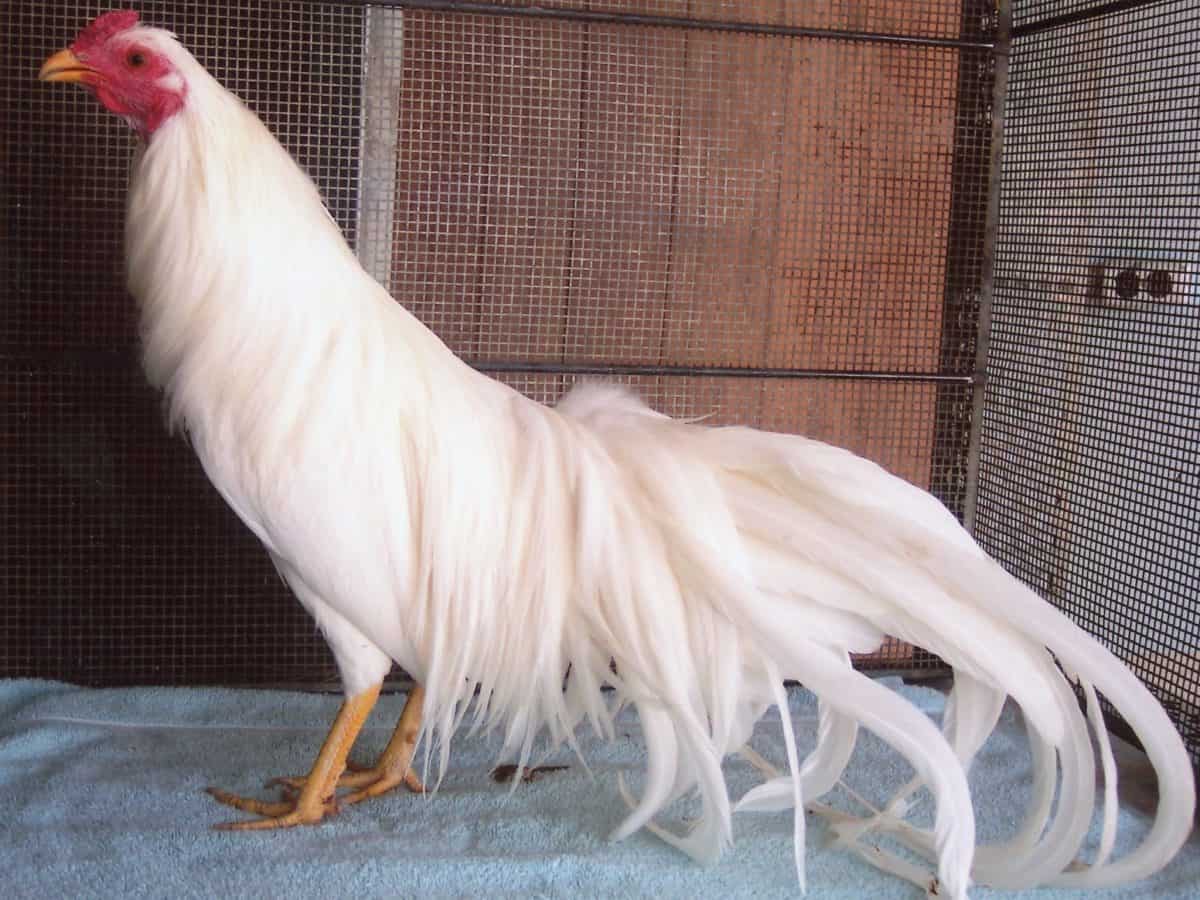
This is a very special white chicken breed that is native to Germany, although there are a few different varieties out there that were produced in countries such as Japan and Britain over the years.
While there are a lot of different varieties for you to choose from out there though, only the white and red-saddled types are recognized by the American Standard of Perfection.
What makes this breed so special though is the fact that it has an unusually long and elegant tail that follows their every move as they hop around the farm.
They also have a pea-shaped or even walnut-shaped comb, yellow beaks and orange to red-colored eyes, depending on the variety you go for of course.
The roosters can easily get to be as heavy as 4.5lbs or 2kg each while the hens tend to weigh a little less, standing at around 3.5lbs or 1.6kg each.
They lay very small eggs that are usually white or cream colored, but because they are not that proficient at it, they don’t cost all that much to buy. So, if you want an affordable white bird that has one of the most elegant tails you’ll ever see, consider opting for the Yokohama chicken breed.
3. California White Chicken

The California White chicken is a superior hybrid breed that is known for its fast-growing capabilities as well as its quiet and calm demeanor.
They are the product of a cross between the California Grey and the White Leghorn, and as such they inherited the best traits from both of these breeds.
When they’re born, these birds tend to have yellow feathers with black flecks over them, but as they mature they get whiter and whiter and those flecks grow into big black spots.
They can easily lay as many as 300 large white eggs per year, with the occasional extra-large egg coming every couple of days or so too.
Per average, these chickens tend to weigh in at around 6lbs or 2.7kg for the males and 5lbs or 2kg for the females.
2. White Frizzle Chicken
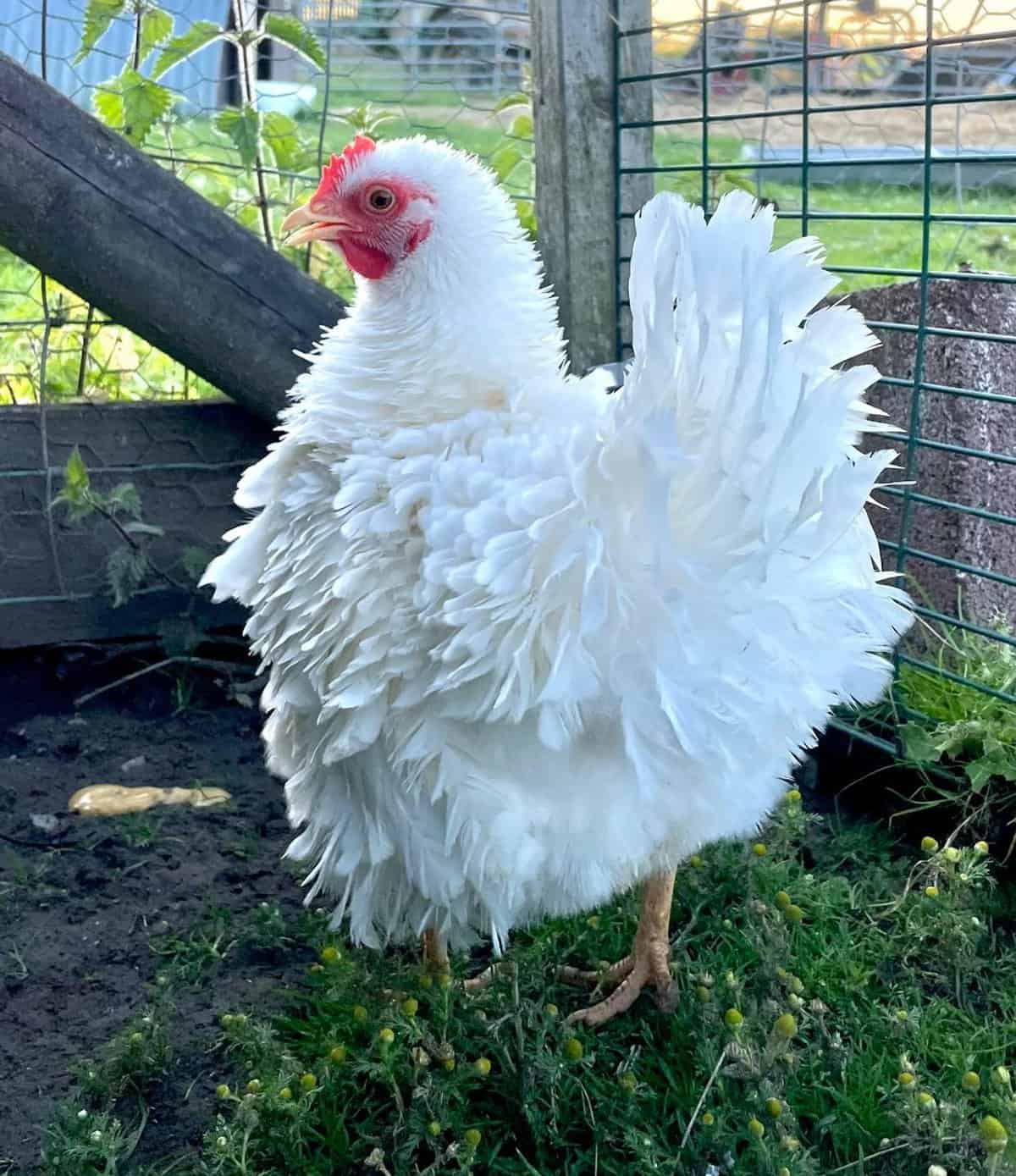
Frizzles are some of the most unique looking birds you’ll ever see, and that’s a fact. The most popular Frizzles out there are the Cochin, the Polish, the Plymouth Rocks and the Japanese Bantams. Usually, they are bought as ornamental birds thanks to their unique plumage.
The frizzle itself is actually caused by a unique genetic component which curls their feathers upwards and outwards, giving it that special look.
For the most part, these birds vary a lot when it comes to their weight, although in general you can expect them to weigh in at around 7 to 8lbs or 3 to 3.5kg each.
They can lay around 2 to 4 eggs per week, although it largely depends on the breed so don’t expect every White Frizzle chicken to be as proficient as the rest.
These eggs are usually cream to brown colored and they’re considered to be medium sized. Just keep in mind that if you want to invest into frizzles, you should make sure to avoid them breeding together, because doing so will usually produce delicate frazzles.
1. White Ameraucana Chicken

This is a very beautiful pure white chicken breed that can only be created by breeding two white Ameraucanas together.
You can also find this breed in several other color selections, including black, blue and wheaten. This in itself makes it a very sought-after breed.
These birds are very hardy, being capable of living through very harsh conditions thanks to their beards and muffs.
As far as their temperament is concerned, this is a very docile and gentle breed that very rarely stirs up any trouble.
While they can lay around 3 to 4 eggs per week, you should keep in mind that they only do so at around 5 to 7 months, so don’t expect immediate produce from them.
Conclusion
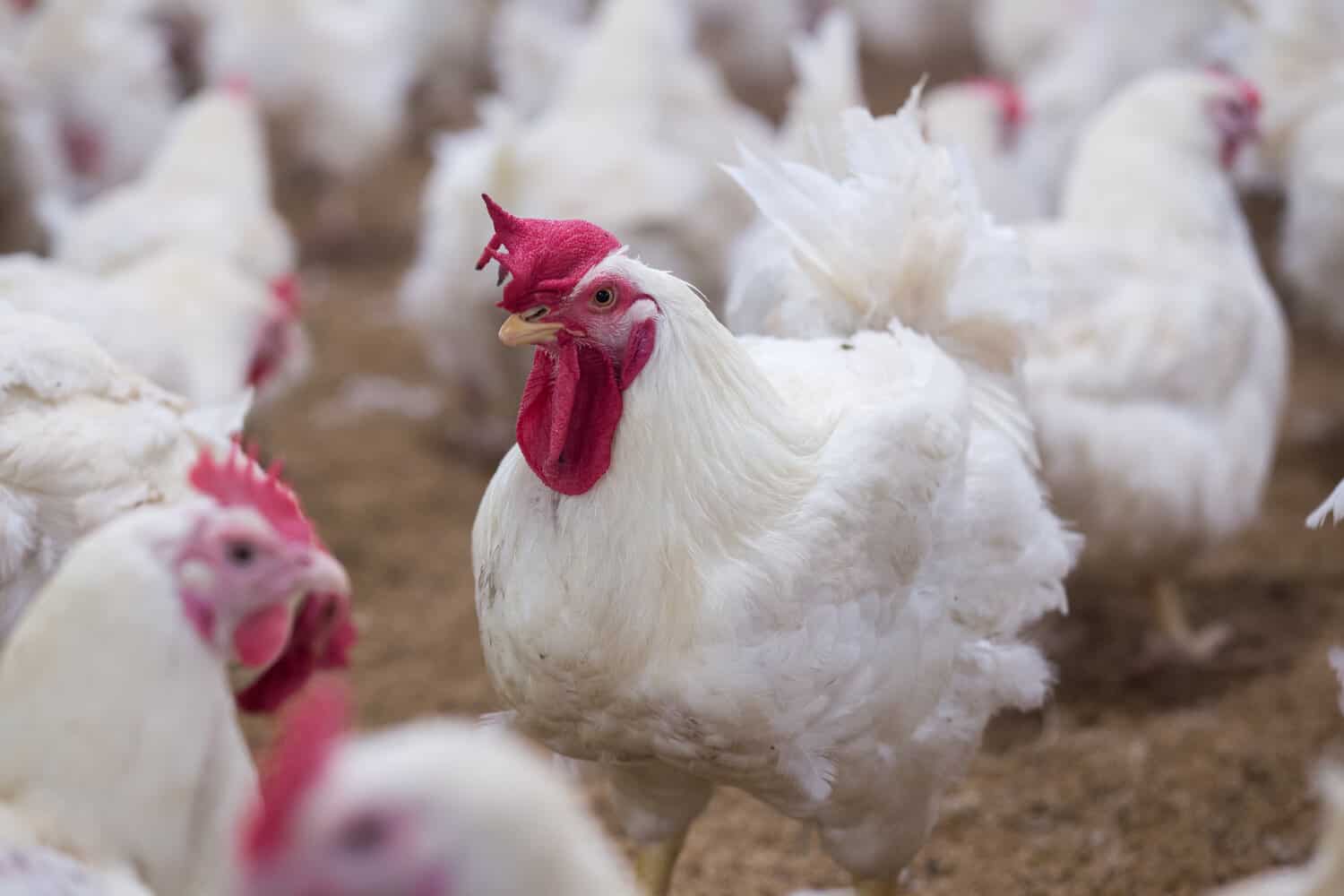
Most of these breeds, with the exception of one or two of them, are incredibly friendly and cute to say the least.
While some are proficient egg layers, others are very delicious meat options and some will make for the best ornamental birds you could ever have around your farm.
So, at the end of the day just pick whichever is best for your needs and try to remember to treat them with the respect and care that they deserve.
Contents
- 15. Araucana Chicken
- 14. White Orpington Chicken
- 13. White Plymouth Rock Chicken
- 12. Australian Langshan Chicken
- 11. Bresse Gauloise Chicken
- 10. Leghorn Chicken
- 9. Hamburg Chicken
- 8. Aseel Chicken
- 7. White Jersey Giant Chicken
- 6. White Australorp Chicken
- 5. Sultan Chicken
- 4. Yokohama Chicken
- 3. California White Chicken
- 2. White Frizzle Chicken
- 1. White Ameraucana Chicken

